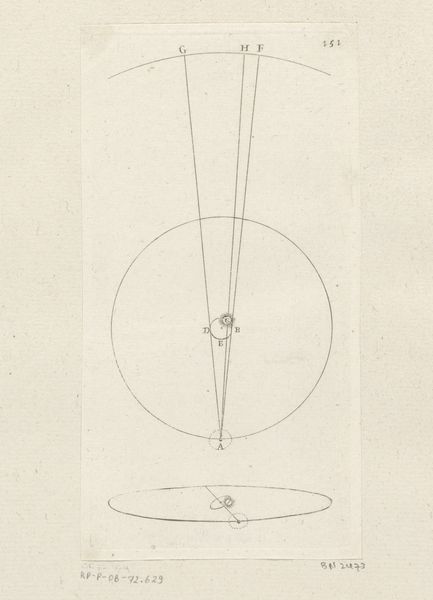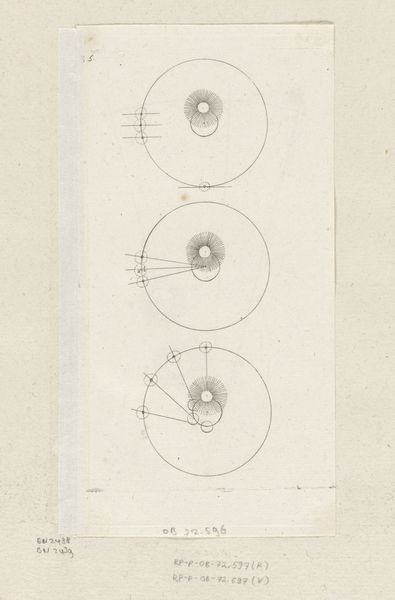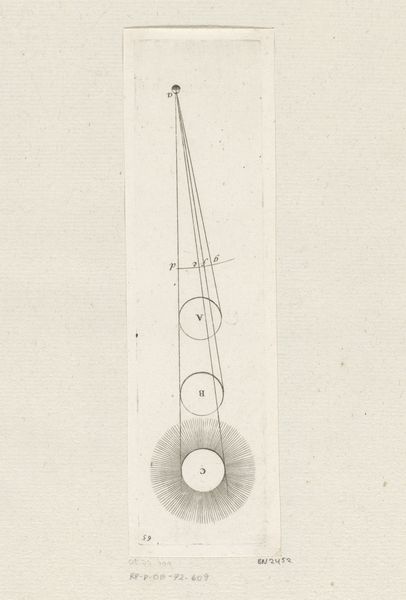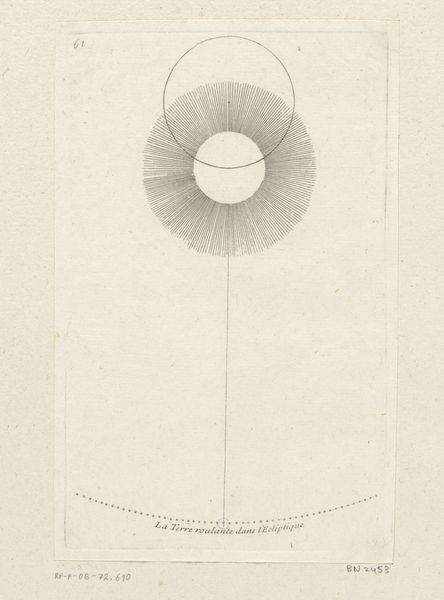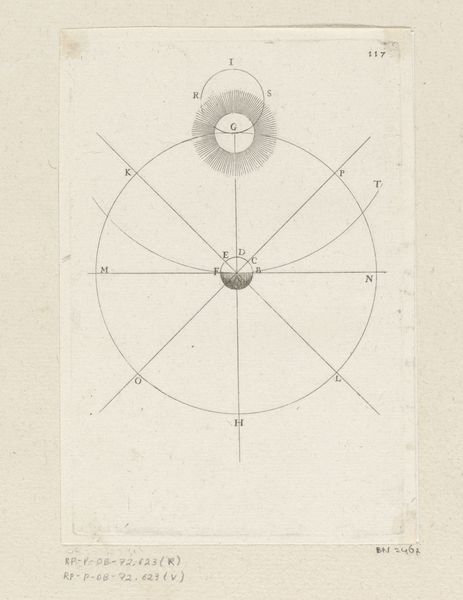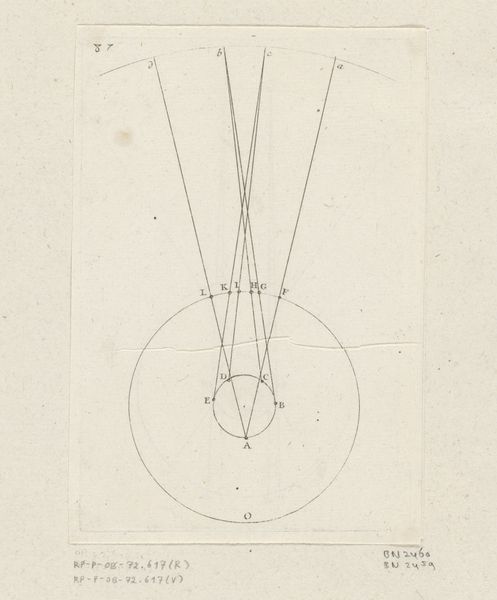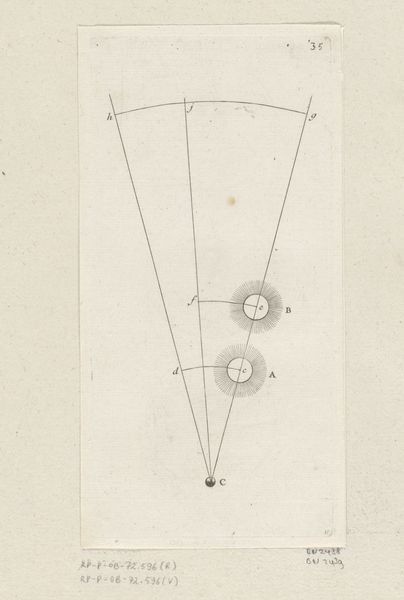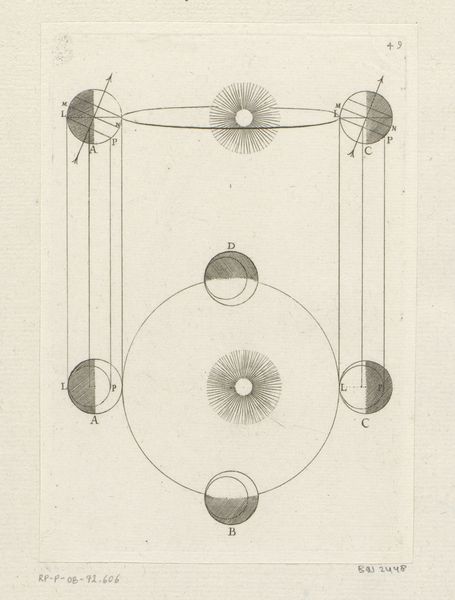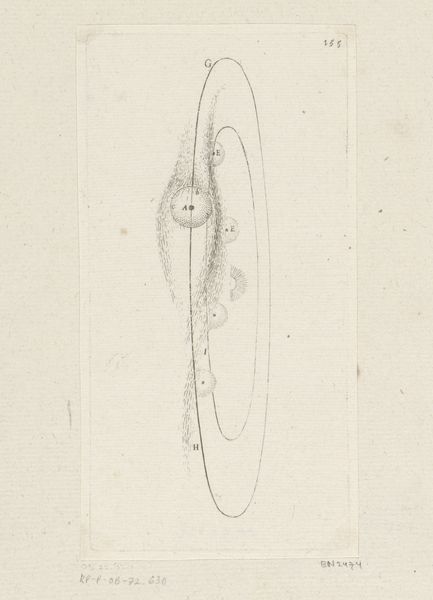
print, engraving
#
aged paper
#
baroque
# print
#
old engraving style
#
white palette
#
perspective
#
geometric
#
line
#
history-painting
#
engraving
Dimensions: height 170 mm, width 104 mm
Copyright: Rijks Museum: Open Domain
Curator: Here we have Sébastien Leclerc I’s "Banen van de Aarde en de Zon," created in 1706. It’s an engraving, part of the Rijksmuseum's collection. Editor: It's striking how spare the image is, almost austere. Lines and circles – evokes a scientific diagram. But the aged paper gives it such presence. Curator: Exactly. Leclerc was working during a period of enormous shifts in scientific understanding. Consider the impact of Newton’s theories of gravity; it redefined humanity's place in the cosmos. Images like this reflect how deeply new cosmologies permeated visual culture, informing not only science, but art. Editor: Right, the material simplicity amplifies that, doesn't it? The entire conceptual framework, monumental astronomical relationships reduced to lines etched into a metal plate, then transferred to paper through pressure. There’s a strange alchemy in that transformation from mind to matter to image. The social context being 18th century science finding its place among traditional art practices. Curator: Precisely. And if you think about the proliferation of these printed images – readily disseminated scientific ideas, fueling discussion in coffee houses, libraries... These prints helped reshape public opinion on nature itself! It's no accident it presents perspective in a deceptively objective form, pushing agendas about knowledge in the burgeoning "age of reason." Editor: True. It begs a lot of questions around craft and its value then. What were the artist's workshops like at the time, and how did that process contribute to a changing sense of labor? A stark contrast to the grand paintings commissioned for court or church that are popular examples of Baroque. This is made for the masses. Curator: A point well taken, its "low" means of production facilitated "high" philosophical conversations. An interplay so rich when considering art's relationship to the sociopolitical tides of the era. Editor: Agreed. Something truly remarkable happens when humble material choices meet a monumental shift in thinking, challenging our perceptions of everything. Curator: Yes, leaving us to wonder about art, knowledge and its place among society at large.
Comments
No comments
Be the first to comment and join the conversation on the ultimate creative platform.
